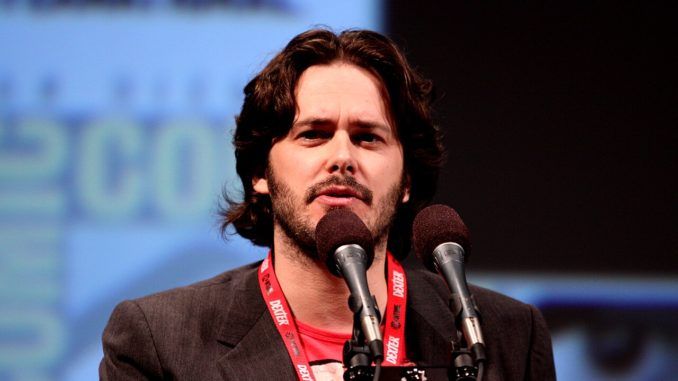
This was originally just going to be a piece about the Three Flavours Cornetto trilogy. Those are the trio of movies directed Edgar Wright and starring Simon Pegg and Nick Frost: Shaun of the Dead, Hot Fuzz and The World’s End. But on rewatching them, it became apparent how Wright had peaked with Shaun. And it’s not just me who thinks so: it’s the highest-rated of his features to date on the IMDb. It seemed more interesting to look both at that trilogy, as well as the director’s career before and after it. So, join us (“JOIN US!”) over the course of the next couple of weeks, as we go through Wright’s cinematic career, from pre-fame shorts to Last Night in Soho.
We begin in September of 1988 when the teenage Edgar saw Jonathan Ross’s series The Incredibly Strange Film Show on Channel 4. The Sam Raimi episode made a particular impression on the fourteen-year-old: “It hadn’t really occurred to me until then that there was an entry level outside Hollywood. So to hear the story of this person, aged 18, making a horror film and eventually getting it seen worldwide was astonishing to me… I was staggered. I thought, ‘That’s what I want to do.'” [Later, Wright would be offered by Raimi the script which would become Drag Me to Hell. He turned Sam down, telling his childhood inspiration, “If I did it, it would just feel like karaoke.”]
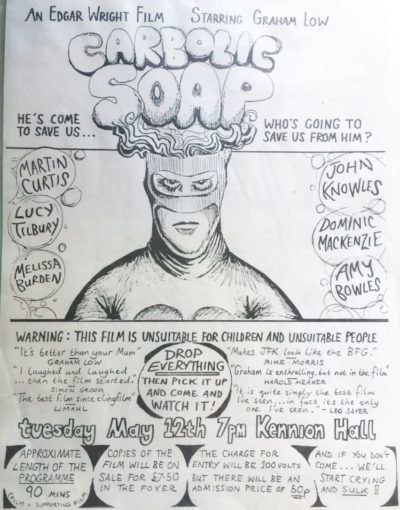 This revelation propelled him into making shorts in his hometown of Wells, Somerset. Shot on Super 8, these included a Die Hard spoof called Rolf Harris Saves the World. Yeah, that’s a concept which has aged poorly, and understandably is “lost”. At age 16, Wright won a contest run by TV show Going Live!, with a stop-motion animated Super 8 short he created in his bedroom. This was prophetically called I Want To Get Into The Movies, though it’s actually about the lack of disabled cinema access ramps. The prize was a Sony Super VHS camera, which he used to upgrade his films
This revelation propelled him into making shorts in his hometown of Wells, Somerset. Shot on Super 8, these included a Die Hard spoof called Rolf Harris Saves the World. Yeah, that’s a concept which has aged poorly, and understandably is “lost”. At age 16, Wright won a contest run by TV show Going Live!, with a stop-motion animated Super 8 short he created in his bedroom. This was prophetically called I Want To Get Into The Movies, though it’s actually about the lack of disabled cinema access ramps. The prize was a Sony Super VHS camera, which he used to upgrade his films
Wright returned to Saturday morning TV with regular collaborator Martin Curtis, when a short they had made called Help was screened on Gimme 5 in 1992. Earlier that year, the duo had also filmed a 60-minute superhero movie, Carbolic Soap, which was screened in May at a local hall (the flyer is above) to an audience of fifty. Admission was 50 pence, with copies of the film itself available on the night for £7.50. It’s about a teenager, Robert Glen, who is transformed into a crime-fighter, by an encounter with a bar of radioactive soap, but has yet to see the light of day, apparently partly due to the use of unlicensed music.
He said, “I remember on the end credits, I used something from the score to Dario Argento’s Phenomena, because it had a particularly epic end cue.” Though last year, one of those VHS copies sold at the lone screening – #28, to be precise – sold for over a thousand pounds at auction. Not a bad return on your investment. Wright, meanwhile, became a student at what was then Poole College of Art. He’d been rejected for their film & TV course, so did audio-visual design instead. But between terms, back in Wells, he was putting his prize to good use, honing his skills as a film-maker…

Dead Right (1993)
Rating: C+
Dir: Edgar Wright
Star: Edward Scotland, Martin Curtis, Richard Green, Amy Bowles
This 40-minute short is undeniably a precursor to Hot Fuzz, in its lovingly satirical approach to the action genre. However, it likely goes even further, with a frequent breaking of the fourth wall. For example, at one point, the director (Wright in a cameo, above) is taken hostage by the villain, then ends up getting shot and replaced as director by a bit-part actress. So, yeah: it’s like that. Your tolerance will likely closely correlate to that for this kind of meta shenanigans – as well as films that were made on a princely budget of two hundred and seventy-five pounds. Though I’m not sure if the version presented on the Hot Fuzz Blu-Ray might have been fixed at additional cost. The music seems awfully “clean” given the budget, though Wright said, “I actually used some library music and got a friend of mine to do some rock songs for it.”
The plot similarly has a hard-edged cop investigating a series of murders in Wells, and forced to partner up with someone of an opposite personality. The unstoppable (police) force in this case is Barry Stern (Scotland), a.k.a. Dirty Barry. The screenplay for Dirty Harry was originally called Dead Right, and that gives you an idea of where this is going, to the point where the hero recites, word-for-word, Clint Eastwood’s famous speech. The town is plagued by a series of brutal killings, which turn out to be the work of cereal-obsessed supermarket employee Philip Quinn (Curtis); Wright had a Saturday job at the supermarket in question, likely factoring in to its availability as a location for his movie.
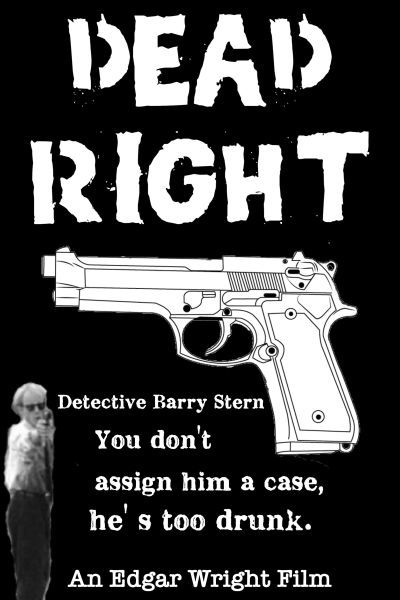 It begins with a pre-film sequence spoofing the VHS tapes of the time, which has a similar spot explaining the rating. Here, however, “viewers are warned of poor jokes, bad production values and, frequently, painful acting.” This is not an empty threat. It is, very obviously, written by an 18-year-old who has seen too many films, then made for little more than pocket-money with his mates. However, what really works is the editing. Wright had honed his skills, of all things by splicing footage from a ninth-generation uncut copy of The Evil Dead back into a BBFC-approved tape. The kinetic style, such as the fondness for whip pans, is easily recognizable from his later films. It’s much quicker and flashier than most amateur video productions from the nineties, of which I’ve seen my share.
It begins with a pre-film sequence spoofing the VHS tapes of the time, which has a similar spot explaining the rating. Here, however, “viewers are warned of poor jokes, bad production values and, frequently, painful acting.” This is not an empty threat. It is, very obviously, written by an 18-year-old who has seen too many films, then made for little more than pocket-money with his mates. However, what really works is the editing. Wright had honed his skills, of all things by splicing footage from a ninth-generation uncut copy of The Evil Dead back into a BBFC-approved tape. The kinetic style, such as the fondness for whip pans, is easily recognizable from his later films. It’s much quicker and flashier than most amateur video productions from the nineties, of which I’ve seen my share.
Wright is clearly trying to go for an Airplane!-style approach, shovelling gags at the screen as fast as possible, regardless of narrative coherence, and hoping enough of them land. I’ll admit some do, such as the victim who is utterly oblivious to the intruder in her home. The hit-rate is certainly below that of your typical Zucker production, and the other limitations are often painfully obvious. However, the pace is relentless, and the editing helps keep the energy level high throughout, going a long way to covering those rough patches. It feels less than forty minutes before the end-credits roll, and considering the amateur nature of those involved, that’s no small achievement.

A Fistful of Fingers (1995)
Rating: C
Dir: Edgar Wright
Star: Graham Low, Martin Curtis, Oli van der Vijver, Quentin Green
If a Western made in Italy is a spaghetti Western, what do you call one made in the West Country? A scrumpy Western? A Cornish pastie Western? I dunno. I must say, Somerset does a reasonable job at passing for the usual terrain, despite the lack of cacti. It’s a broad spoof of the genre, which aims to do for Westerns, more or less what Monty Python and the Holy Grail did for Arthurian lore. Just on a budget of around eleven thousand pounds, and with considerably less experience in all aspects. The results are, understandably, variable. I did laugh out loud on occasion. However, it’s clearly no Holy Grail.
The plot concerns a bounty-hunter with no name, though we discover this is only because he’s really called Walter (Low). He’s on the hunt for an outlaw called The Squint (van der Vijver), and it becomes personal after his target kills Walter’s “horse”. Quotes used advisedly, and we’ll get to that shortly. He teams up with an Indian, Running Sore (Curtis), and discovers The Squint runs an organization called Outlaws OK. That’s about it. The film only runs 78 minutes, and is clearly (and understandably) more concerned with jokes than plot. For example, the horses are more or less of the hobby variety when being ridden, or the pantomime flavour when “running wild.” I’m certain 99% of Brits who saw this, will have immediately made a comment about coconut shells.
 There are a few similar, unashamedly dumb jokes. The Indian blocking the way, who says “None shall pass.” A nun then passes. A “The Milky Bar’s are on me!” line, which will make absolutely no sense, outside of a very narrow window of place and time. When the comedy here hits the mark, it hits hard. However, even in its short running-time, there are a lot of scenes where it seems to be meandering in circles, without actual humour. Is it another case of place and time, making the jokes fall flat? Or was Wright over-reaching himself? Certainly, his preceding Dead Right, at forty minutes, seemed considerably punchier, and with much better editing. This might have worked better at a similar length, and the 4:3 aspect ratio doesn’t exactly scream “Sergio Leone”.
There are a few similar, unashamedly dumb jokes. The Indian blocking the way, who says “None shall pass.” A nun then passes. A “The Milky Bar’s are on me!” line, which will make absolutely no sense, outside of a very narrow window of place and time. When the comedy here hits the mark, it hits hard. However, even in its short running-time, there are a lot of scenes where it seems to be meandering in circles, without actual humour. Is it another case of place and time, making the jokes fall flat? Or was Wright over-reaching himself? Certainly, his preceding Dead Right, at forty minutes, seemed considerably punchier, and with much better editing. This might have worked better at a similar length, and the 4:3 aspect ratio doesn’t exactly scream “Sergio Leone”.
The (mostly, if not entirely) amateur cast try and get by on enthusiasm rather than talent. Given the broad nature of the material they’re delivering, this isn’t too much of an issue, and occasional elements do work better than the budget might suggest. The score is a proper one, and fits the genre mash-up nicely, while there are a couple of bits of animation that certainly do not suck. Like Holy Grail, it ends in a cinematic non sequitur, in this case with a much-loathed jokester from British nineties TV showing up, to tell us a key plot point was just a prank. I wonder how Wright set that up? And, more importantly, why? As first features go, I’ve definitely seen worse. Yet it’s no Evil Dead either.
His first “true” feature did receive a theatrical release. Well, it opened at the Prince Charles Cinema on November 24th, 1995. How long it played remains uncertain. But its significance is undeniable, because it opened the door for Wright to move into television, first working with Matt Lucas and David Walliams, then on comedy series Asylum, where he met Simon Pegg and Jessica Hynes. They asked him to direct Spaced, and an episode of that, in which Pegg’s character played Resident Evil 2 while tripping on speed, helped inspire Wright’s return to the big screen, a decade after A Fistful of Fingers.
Shaun of the Dead (2004)
Rating: A+
Dir: Edgar Wright
Star: Simon Pegg, Nick Frost, Kate Ashfield, Dylan Moran
I first saw Shaun of the Dead, back in 2004 at a promotional screening, with Frost, Pegg and Wright in attendance. A poster signed by the three remains among my most-beloved pieces of movie memorabilia. I think I fell in love with it, the moment I heard the line the makers explicitly warned us about before the screening: “Can I get any of you cunts a drink?”. Having watched it again for this piece, my affection is entirely undiminished.
If I had to take one film to a desert-island, to watch for the rest of my life, this might well be it. I’ve written more than enough about it already, whether you want a straightforward review, or a discussion of how the London life of the early 2000’s it portrays is now little more than a distant memory. But since it may also be my pick for the most quotable film of all time, I’ll drop in ten of my other, most frequently repeated lines from it.
- No, what does “exacerbate” mean?
It means to make things worse. - …and not a cheap posy from a garage forecourt.
- Cornetto.
- There’s a girl in the garden. In the garden there’s a girl.
- I’ll repeat that: by removing the head, or destroying the brain.
- They were a bit bitey…
- How’s that for a slice of fried gold?
- I’m fine. I ran it under a cold tap.
- Big Al also says dogs can’t look up.
- It’s on random.
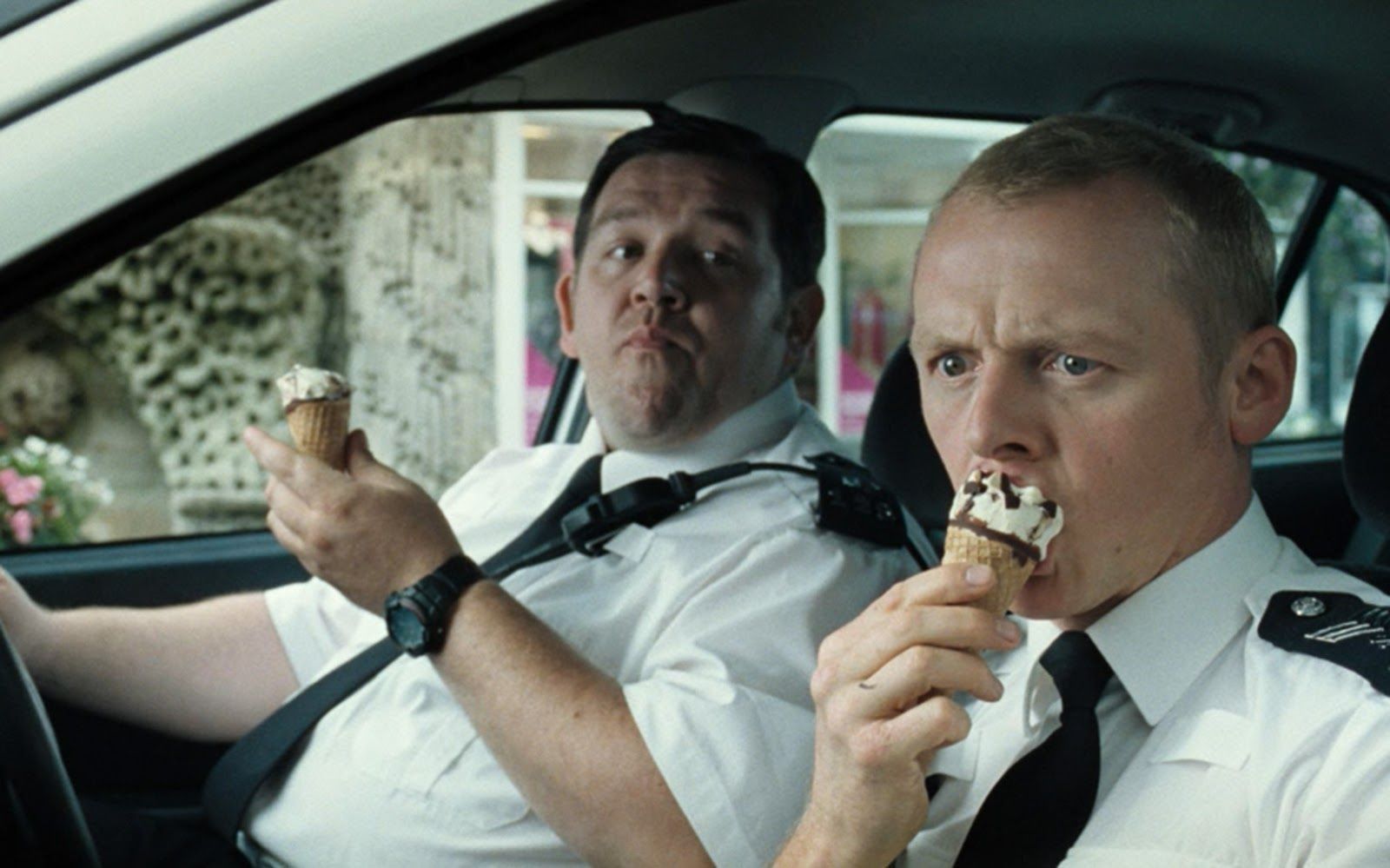
Hot Fuzz (2007)
Rating: B
Dir: Edgar Wright
Star: Simon Pegg, Nick Frost, Jim Broadbent, Timothy Dalton
Having nailed perfectly the horror-comedy, skewering the genre with obvious appreciation, for his follow up Wright went back to the same well for a different genre. This time, the target is action movies and, rewatching this, I feel more or less the same as I did on its original release. While a solid effort, this doesn’t manage to pull off the combination to such staggering effect as Shaun. There are certainly better action comedies out there: Stephen Chow’s filmography includes a few, most obviously Kung Fu Hustle. Maybe we just have different tastes in action: Point Break and Bad Boys II are touted here, both of which are likely better works than this.
Another issue could be Simon Pegg’s character, Sergeant Nicholas Angel. To be blunt, he’s an asshole: while unquestionably deliberate, you start from a different place than for Shaun, with whom it was easy to empathize immediately. Angel has admirable qualities, certainly. He just is not very likable, and that leaves the film running uphill from the start. What it does nail is a superb array of supporting characters, who are delightfully memorable. There are two Oscar winners present here: Olivia Colman is the only policewoman in Sandford, and Nicholas’s ex-girlfriend – yeah, Pegg’s character has been broken up with here too – is played, behind a bio-hazard mark, by an uncredited Cate Blanchett.
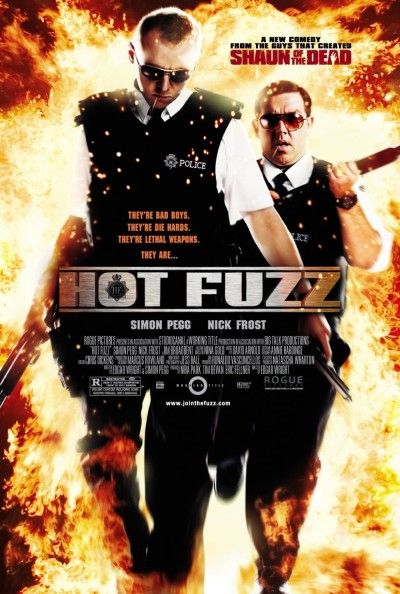 Wright also does a very good job of capturing the parochial nature of small-town life. [The bulk of it was filmed in Wells, where he grew up, though they had to remove the city’s cathedral digitally in post-production.] For example, I’ve endured my share of bad amateur dramatic shows, and was wincing throughout the production of Romeo and Juliet performed here. It does feel as if the actual plot at the film’s heart might be too complex, involving various shenanigans around land development. Again, Shaun is elegant in its simplicity. Here, you have to pay attention to the story, and that seems almost to break the rules of the genre.
Wright also does a very good job of capturing the parochial nature of small-town life. [The bulk of it was filmed in Wells, where he grew up, though they had to remove the city’s cathedral digitally in post-production.] For example, I’ve endured my share of bad amateur dramatic shows, and was wincing throughout the production of Romeo and Juliet performed here. It does feel as if the actual plot at the film’s heart might be too complex, involving various shenanigans around land development. Again, Shaun is elegant in its simplicity. Here, you have to pay attention to the story, and that seems almost to break the rules of the genre.
The finale is where the film came closest to losing me. It reverts to an extended series of action set pieces that blurred into one large burst of semi-automatic weaponry, with little to stick in the mind. Fuzz had become the loud, mindless movie, at which it had spent the first hour doing a good job of poking fun, and becomes a lot less effective as a result. The fact the characters have to wave around DVD covers of the movies they’re referencing, and include clips as well, perhaps suggests less confidence in the audience’s ability to get the joke. However, it still became the biggest commercial hit in the Three Cornettos Trilogy (the blue variety here, reflecting the police theme), and it remains a fine piece of work.
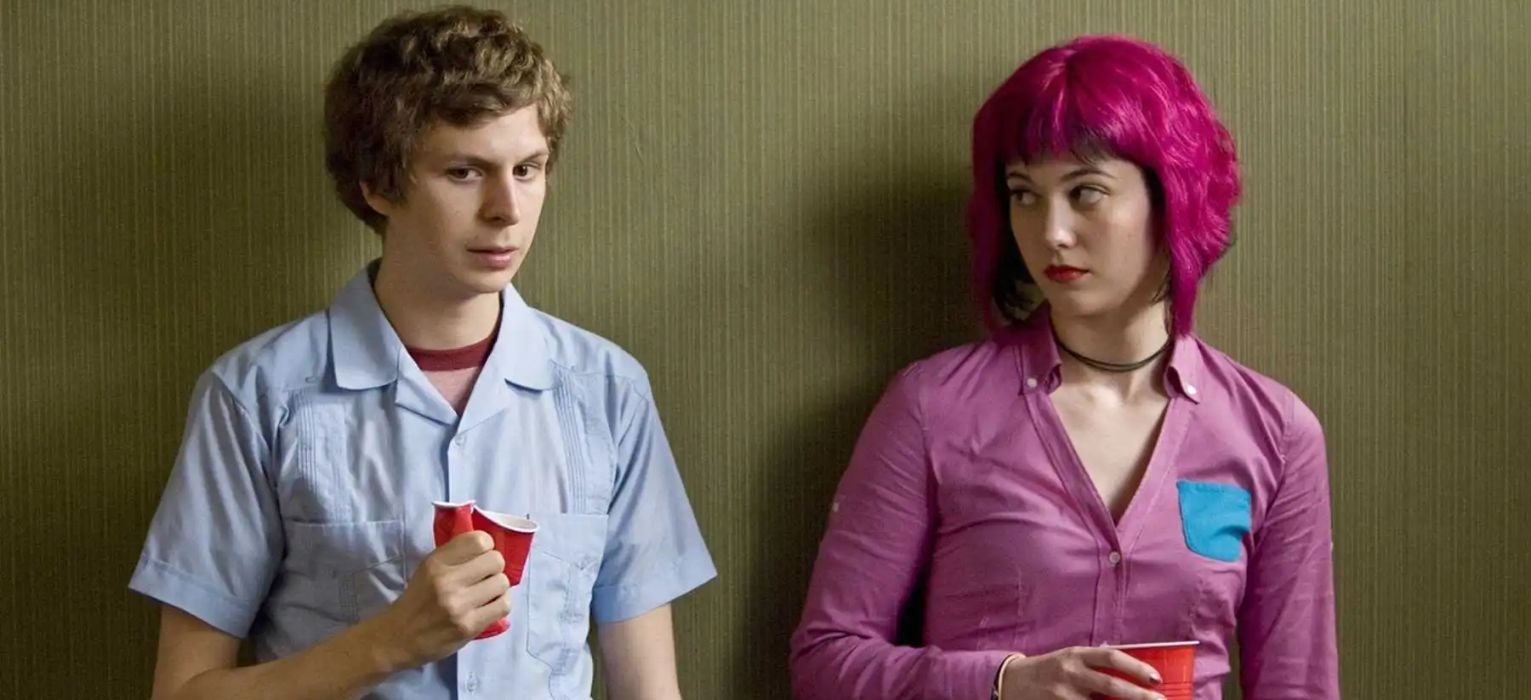
No, Scott Pilgrim vs. The World STILL sucks…
Rating: N/A
Box-office return is not always an accurate reflection of a film’s quality. Some of my favourites, included The Thing and Blade Runner, were dismal flops on their original release. But there are times when the audience’s decision to say “No, thanks” to a film proves to be completely right, and Scott Pilgrim vs. The World is such a movie. Even including overseas returns, it failed to recover its production costs at the box-office, and those came in at anywhere from $60-85 million, no chump change in 2010. But since then, it has acquired a cult around it, being called “ahead of its time.” I guess it is, providing you mean it embodies much of all that’s worst about modern cinema i.e. being a shitty comic-book adaptation.
If you want an accurate, succinct summary of how I feel about Scott Pilgrim, a comment on Reddit nails it: “Twilight for gamers”. I might expand that slightly, to “Twilight for hipster gamers.” Possibly adding the words “wish fulfillment” in there somewhere too. I mean, it was the best movie of 2010 – a year which gave us, oh, Inception, Four Lions, etc. – according to cancelled sex-pest and all-round loser Harry Knowles. Little more needs to be said. But. hey, perhaps my original review was too harsh, and it had indeed improved over the decade-plus since it came out? Though the omens preceding a re-watch were poor, such as my visceral reaction to its tag-line: “An epic of epic epicness.” Jesus. It’s nice retarded eleven-year-olds were able to get jobs in Hollywood back then.
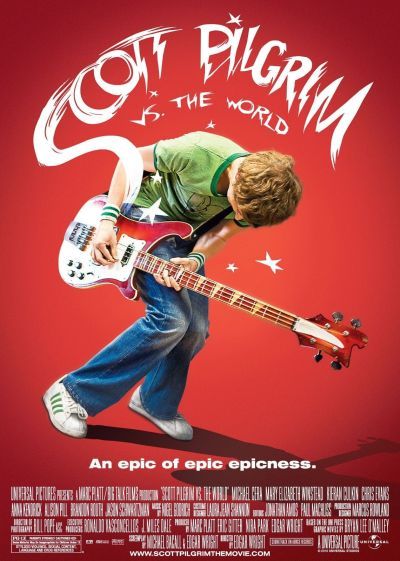 Oh, who am I trying to kid. As the headline and most of the above makes very clear, it’s still a bad movie, one which deserved to crash and burn, doing far worse than The Last Airbender. It did not take long to be reminded of why I despise it, and as my previous opinion makes fairly clear, the main issue is Michael Cera as Scott Pilgrim. My earlier hatred of Cera has dimmed slightly, along with his star (I think Barbie might be the first movie of his I’ve heard of, since this). But I still think he’s terrible, and this film doubles down on that by giving him an utterly unlikable character to play. Scott is an aimless slacker, with no useful life skills, an abrasively passive-aggressive personality and few if any redeeming features. Yet he still is irresistible to women! He’s in a band! Doesn’t need to have a job! Plays an oce-lot of video games! See what I mean about wish fulfillment for Harry Knowles?
Oh, who am I trying to kid. As the headline and most of the above makes very clear, it’s still a bad movie, one which deserved to crash and burn, doing far worse than The Last Airbender. It did not take long to be reminded of why I despise it, and as my previous opinion makes fairly clear, the main issue is Michael Cera as Scott Pilgrim. My earlier hatred of Cera has dimmed slightly, along with his star (I think Barbie might be the first movie of his I’ve heard of, since this). But I still think he’s terrible, and this film doubles down on that by giving him an utterly unlikable character to play. Scott is an aimless slacker, with no useful life skills, an abrasively passive-aggressive personality and few if any redeeming features. Yet he still is irresistible to women! He’s in a band! Doesn’t need to have a job! Plays an oce-lot of video games! See what I mean about wish fulfillment for Harry Knowles?
This is just the start. We immediately get to experience the genuinely terrible Sex Bob-omb, his band. That may be the joke – except we get far too much of their shitty music inflicted on us through the course of the movie. It doesn’t get better with repetition. Ironically, the morning after watching them, I saw an episode of It’s Always Sunny in Philadelphia, in which the gang formed a band. Chemical Toilet are superior to Sex Bob-omb. If I possessed genuine musical talent, and was in an actual band, I’d probably be even more pissed at the depiction here. Then Scott’s dubious “girlfriend” shows up, with the ludicrous name of “Knives Chau”. What, was “Sporks Wong” already taken? Or “Teenage Oriental Fetish Girl”? This element has already been heavily criticized, and his emotionally abusive treatment of her simply reinforces Pilgrim as a top tier douchebag.
It feels as if Wright has often had a problem with women characters, which rarely come over as well-layered as the men. Their almost total absence from Hot Fuzz didn’t matter much, because of the genre. Here though, they are key drivers of the plot, in terms of triggering Scott’s actions. Ramona Flowers (Winstead) needs to be someone capable of causing the hero to fall instantly in love, and subsequently be prepared to go through hell for her. BIG swing and a miss there. Their relationship feels 100% like it exists, purely so the movie can happen, and is never at all convincing. I think this is mostly a Cera problem, since he goes through the entire film wearing the same, slightly confused expression. Mind you, Winstead is painfully generic. Not so much the “Manic Pixie Dream Girl” archetype, as a bad incarnation of the MPDG. Her hair has more character than the rest of her.
Any pleasures to be found here are around the edge. One of the Culkins – they’ve largely blurred together into an amorphous acting blob – as Scott’s gay room-mate, or Aubrey Plaza, clearly preparing for her role as April Ludgate. Oh, hang on: that came out over a year earlier? So let’s not hear any more about her being an unknown, shall we? The more acidic the character here, and aware of how terrible everyone else is, the better they fare. If only Scott, Ramona and Cutlery Zhang had the same degree of awareness. Which brings me to the ending, where Scott triumphs after winning “the power of self-respect.” Wait, what? How was that ever his issue to begin with? It is Scott’s lack of respect for everybody else that has been the problem, not himself. It feels like Wright may have massively misunderstood what he was depicting over the previous hour and forty minutes.
 The action sequences have not aged well either. Though I question how “ground-breaking” they were. This came out eleven years after a little-known movie you might have heard of, called The Matrix; ten after Crouching Tiger, and hell, even seven after Kill Bill: Volume 1. Seeing people flying through the air in martial arts battle was hardly novel at the time, and adding video-game sounds is no improvement. Now, they look like an over-edited mess, though the film is not alone there. The late noughts was a banner period for the hellish landscape of weed-whacker editing. While Hot Fuzz had a similar problem, the action there – and consequently the problem – was largely limited to the end. Here, every five minutes we get another incoherent sequence. Not that it matters, because there’s no tension, and barely any threat to the hero emanating from another opponent, drawn out of the film’s endless roll-call of feeble hipsters.
The action sequences have not aged well either. Though I question how “ground-breaking” they were. This came out eleven years after a little-known movie you might have heard of, called The Matrix; ten after Crouching Tiger, and hell, even seven after Kill Bill: Volume 1. Seeing people flying through the air in martial arts battle was hardly novel at the time, and adding video-game sounds is no improvement. Now, they look like an over-edited mess, though the film is not alone there. The late noughts was a banner period for the hellish landscape of weed-whacker editing. While Hot Fuzz had a similar problem, the action there – and consequently the problem – was largely limited to the end. Here, every five minutes we get another incoherent sequence. Not that it matters, because there’s no tension, and barely any threat to the hero emanating from another opponent, drawn out of the film’s endless roll-call of feeble hipsters.
Reading other commentary, I frequently hear it suggested that “You need to read the comics” on which it’s based. No, I don’t. Either this is a poor adaptation of the source material. Or the original comics were shit as well. Neither of those alternatives are my problem. If a film can’t stand on its own, it needs to come packaged with a set of the source material, otherwise it’s completely fair to judge it, as is. And in the final analysis, this is very much found wanting. It’s the film on which Wright didn’t so much jump the shark, as tap-dance across it, wearing a large sombrero, and singing “I’m a little teapot.”
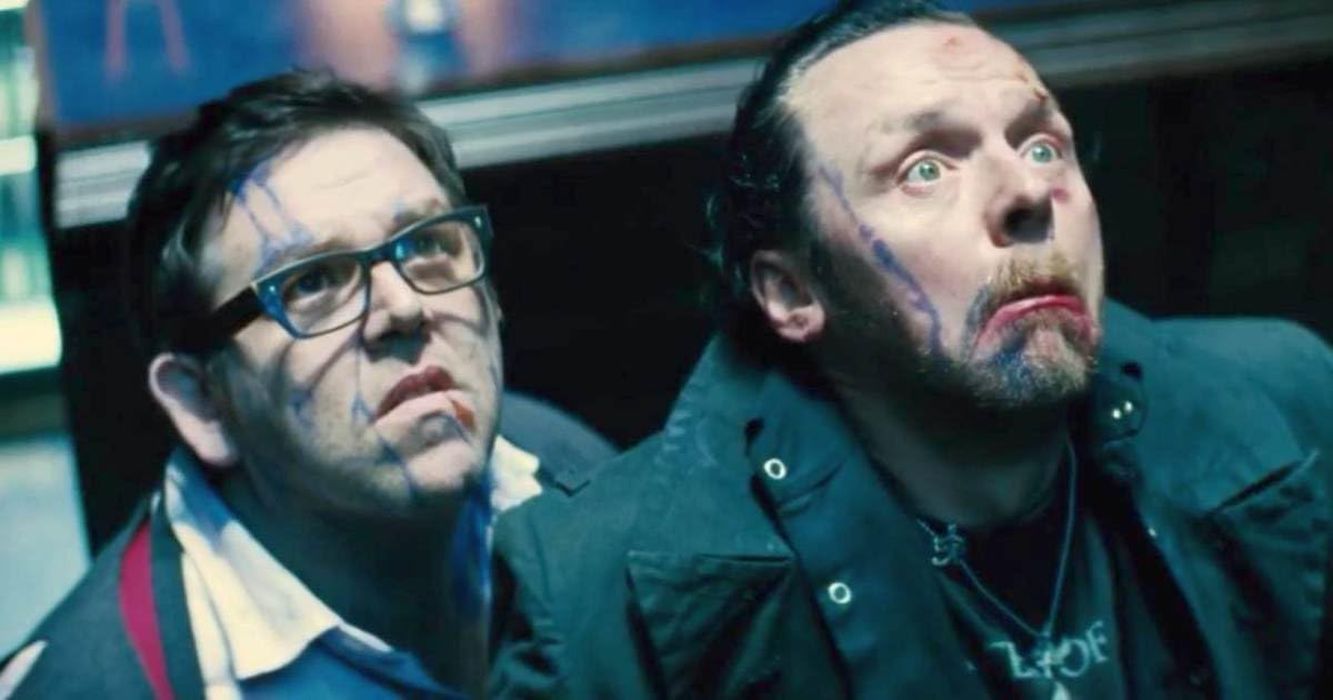
The World’s End (2013)
Rating: C+
Dir: Edgar Wright
Star: Simon Pegg, Nick Frost, Paddy Considine, Martin Freeman
Ten years on from my first viewing, almost to the day, and of the trilogy, this one has worn least well. It’s probably telling that I likely haven’t seen it since its initial release, while both Shaun and Fuzz have been seen on multiple occasions. If I’m surfing and see either of those, I’ll likely dip in. This one? Meh. Reading my original review (below), the Dr. Who comparison seems apt, especially in the finale which basically has the hero annoying an alien invasion off of Earth. The bad news: we stopped watching Dr. Who a couple of years ago. It may still be a key factor that the ground it’s treading, described by the makers as “British social science fiction”, is already well-worn.
That stands in contrast to its predecessors. Outside of 28 Days Later, there had hardly been a British zombie film of note before Shaun. Fuzz seemed similarly fresh, in its relocation of Hollywood action tropes to the English countryside. This might well be a Christmas special episode of Dr. Who, complete with special guest stars like Pierce Brosnan and Martin Freeman. This is a bit – okay, considerably – more sweary, including the immortal line, “Why don’t you just get back in your rocket and fuck off to Legoland, you cunts!” That had the makers sending a inquiring letter to the BBFC, asking how many C-bombs they were allowed in a ’15’ certificate. The answer: it depends on context.
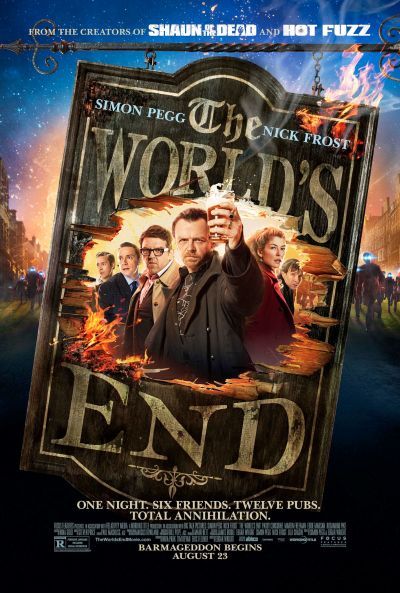 It is, basically, another mid-life crisis movie for Pegg. His character here, Gary, is definitely a bit of a dick, to put it mildly. Even by the end, I’m not certain what life lesson has been learned: he has now become a teetotal dick. That’s what passes for a character arc here. More appealing and entertaining is Andy Knightley (Frost), who goes from a sober corporate lawyer to a true drunken master, eventually swinging pub stools around like an English version of Sammo Hung. Key word “eventually”, since the early going is almost a chore, with things not kicking off properly until Gary gets into a bathroom fight with one of the alien-made replacements for the locals. That and the other brawls are likely the film’s best element, providing comedy that is surprisingly light in other areas.
It is, basically, another mid-life crisis movie for Pegg. His character here, Gary, is definitely a bit of a dick, to put it mildly. Even by the end, I’m not certain what life lesson has been learned: he has now become a teetotal dick. That’s what passes for a character arc here. More appealing and entertaining is Andy Knightley (Frost), who goes from a sober corporate lawyer to a true drunken master, eventually swinging pub stools around like an English version of Sammo Hung. Key word “eventually”, since the early going is almost a chore, with things not kicking off properly until Gary gets into a bathroom fight with one of the alien-made replacements for the locals. That and the other brawls are likely the film’s best element, providing comedy that is surprisingly light in other areas.
The idea for this had been kicking around for a while – it started as a teenage-based script called Crawl, written by Wright when he was 21. Yet it feels more like contractual obligation than a project made out of particular passion. Things like the foreshadowing of the pub names seems forced, and the musical choices put the cart in front of the horse. “Loaded” by Primal Scream is about as obvious a choice as imaginable. Perhaps it’s me, not being a fan at all of “Madchester”, which heavily pollutes proceedings here. I admit, I did enjoy the use of This Corrosion by The Sisters of Mercy at the end.
It’s ironic that one of the themes of this is, “You can never go back,” because the results feel like Wright himself was attempting to go back to what had worked, after the expensive failure of Scott Pilgrim. What’s true in the movie is, to a significant degree, true of the movie. Ten years on, this is increasingly likely the last collaboration between Wright, Pegg and Frost. Perhaps they felt there was nothing more of interest to add. Perhaps they had drifted apart in their career goals. Either way, I think a parting of the ways may have been for the best. While this has some very good moments, it’s not difficult to see why this is the lowest-rated of the trilogy, and going on further together may well have been in nobody’s best interests.
[September 2013] The finale of the Three Flavours Cornetto trilogy, certainly lives up to its predecessors: I’d probably rank it as better than Hot Fuzz, but not as good as Shaun, though your mileage may vary. Having covered horror and action genres in the previous two entries, this one is more towards science-fiction. At times, it plays like a Dr. Who episode, possessing the same mix of quirky charm and intelligent wit, but the way the plot takes a left-turn in the middle, and the bar locations, reminded me a fair bit of From Dusk Till Dawn. Five friends, led by the alcoholic reprobate Gary (Pegg), reunite in their home town of Newton Haven
 This is in an effort to re-create a legendary failed pub-crawl from their youth, through a dozen pubs in one night, even though the other four have now largely matured beyond such things. However, plans for a simple night of hardcore drinking are derailed, when an encounter in a pub toilet leads to Gary decapitating what turns out to be a robot: part of an apparent alien attempt to take over the world, one of the insertion points being Newton Haven. Like the other entries, it straddles the boundary between its genre and comedy with impeccable ease, and it’s clear those involved have a deep, genuine affection for SF. There’s also a lot here that will repay repeat viewing, with foreshadowing of later events, etc. – even the pub names are meaningful.
This is in an effort to re-create a legendary failed pub-crawl from their youth, through a dozen pubs in one night, even though the other four have now largely matured beyond such things. However, plans for a simple night of hardcore drinking are derailed, when an encounter in a pub toilet leads to Gary decapitating what turns out to be a robot: part of an apparent alien attempt to take over the world, one of the insertion points being Newton Haven. Like the other entries, it straddles the boundary between its genre and comedy with impeccable ease, and it’s clear those involved have a deep, genuine affection for SF. There’s also a lot here that will repay repeat viewing, with foreshadowing of later events, etc. – even the pub names are meaningful.
I was also surprisingly impressed with the fight scenes here, especially considering neither Pegg nor Frost are actually renowned martial artists; credit Brad Allen, who has worked with Jackie Chan, for managing to make them look increasingly-competent, the more they drink (obvious shades of JC’s Drunken Master there). After the horror that was Scott Pilgrim, nice to see Wright rein things back a bit, and the film is all the more effective for it, even if the eventual denouement is somewhat anti-climactic, and some elements don’t make that much sense. However, the rest is such an entertaining and smart ride, possessing both brain and heart, that its flaws are absolutely forgivable. B+
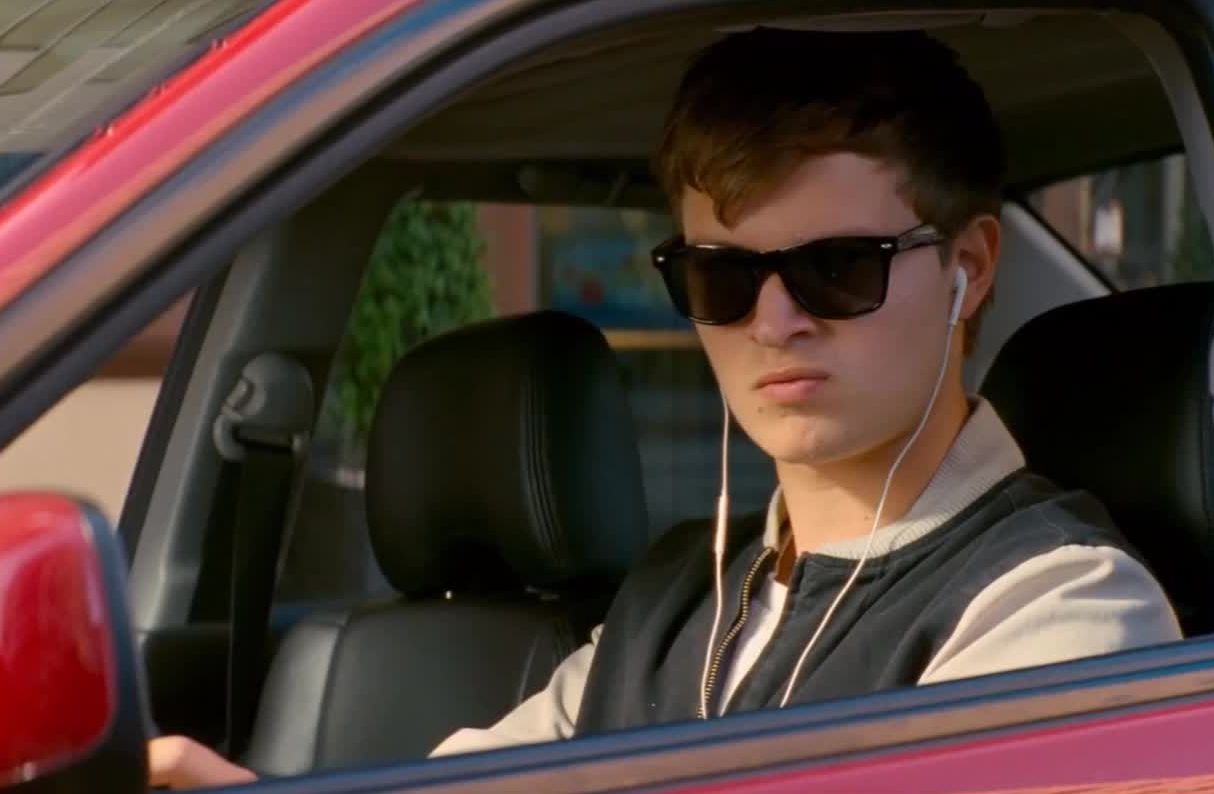
Baby Driver (2017)
Rating: C-
Dir: Edgar Wright
Star: Ansel Elgort, Lily James, Kevin Spacey, Eiza González
Where I work, they now play Spotify over the PA system during the day. It’s not something I like, mostly because my tastes are not exactly reflected in 99% of the playlist, although it has convinced me I’m correct in believing that modern music sucks farts out of dead dogs. But worse than having someone else’s choice of tunes inflicted on you, is when my co-workers decide to start singing along, drumming, etc. This is not a fucking karaoke bar, you twat, and you are not Neil Peart. Shut the hell up and just do your goddamn job. Unfortunately, a lot of Baby Driver reminded me of this: I felt like I was trapped inside Edgar Wright’s iPod, while he hummed along to his own mix-tape. This is not far from what I suspect hell would be like.
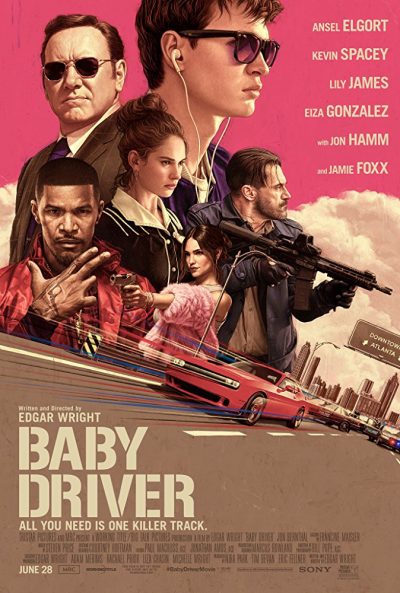 There are a lot of the same problems here as in Scott Pilgrim vs. the World: rampant and unrestrained self-indulgence, like the worst excesses of Quentin Tarantino. It’s no surprise that the Academy Award nominations it received were entirely in the editing and mixing categories, because the pleasures here – while certainly existing – are entirely as a technical exercise. The lead and script certainly don’t deserve any prizes. Indeed the problems start with lead Elgort, who gives the kind of annoyingly vacant, pretty-boy performance which I previously thought was solely the territory of Michael Cera.
There are a lot of the same problems here as in Scott Pilgrim vs. the World: rampant and unrestrained self-indulgence, like the worst excesses of Quentin Tarantino. It’s no surprise that the Academy Award nominations it received were entirely in the editing and mixing categories, because the pleasures here – while certainly existing – are entirely as a technical exercise. The lead and script certainly don’t deserve any prizes. Indeed the problems start with lead Elgort, who gives the kind of annoyingly vacant, pretty-boy performance which I previously thought was solely the territory of Michael Cera.
He plays “Baby”, a tinnitus-affected youth – hence the perpetual soundtrack to which he listens – who is a master driver. He’s under the thumb of Doc (Spacey, back before film-makers would gouge out their own movie, rather than have him in it), a crime boss who is leveraging Baby’s talents as a wheel-man on his heists. Baby takes care of his deaf-mute foster father, and hangs out at a diner where he bonds with waitress Debora (James, a perfect foil in vapid Manic Pixie Dream Girl emptiness for Elgort). But, inevitably, Baby’s efforts to leave the criminal underworld after the battleship-sized cliche of “one last job” fall on deaf ears, leaving him needing to drive his way out of trouble, if he’s to get his happily ever after into the sunset with Debora.
More interesting than the central pair are Doc and the plethora of oddballs who form the roster from which he draws the teams for the heists. While far too much loose cannons to be credible career criminals – they’re more cut from “one and done” cloth – they have life to them, which Baby is lacking. He’s a soundtrack CD made flesh, nothing more. The choreography, with characters’ actions often matching the beat of the music, is impressive, and I get where Wright is coming from. I use to march round London in the nineties with my Walkman headphones on, imagining my life with its own soundtrack. But I didn’t inflict it on anyone else, and nobody sure as hell gave me $35 million in order to do so.
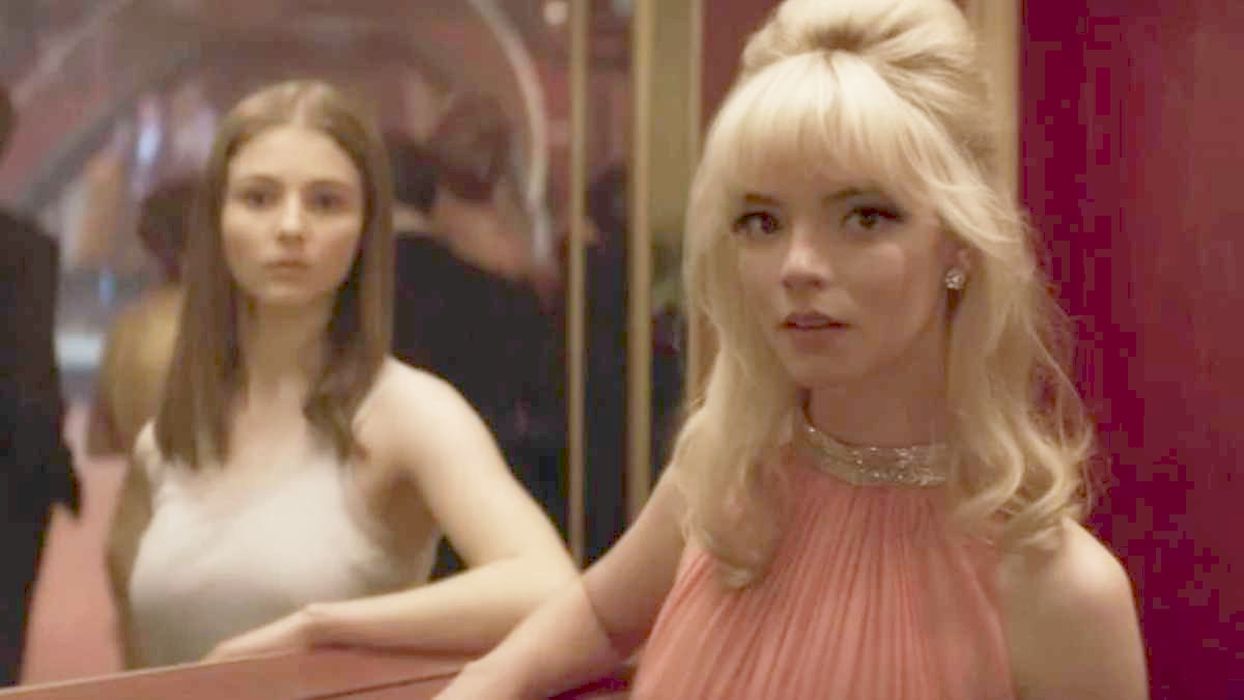
Last Night in Soho (2021)
Rating: D+
Dir: Edgar Wright
Star: Thomasin McKenzie, Anya Taylor-Joy, Matt Smith, Diana Rigg
Well, this is a bit of a mess. Introverted fashion student Eloise (McKenzie) is obsessed with the sixties, and moves from Cornwall to London to follow her dream. Her mother did something similar but had mental issues, and ended up killing herself. It’s not long before we discover that these things seem to run in the family. Eloise has difficulty fitting in to shared student accommodation, and instead rents a room from long-time Soho resident, Ms. Collins (Rigg). She then begins to experience visions which take her back to the sixties, experiencing the life of Sandie (Taylor-Joy), a wannabe singer, whom Eloise idolizes and begins to imitate, for example by dying her hair blonde.
Except, Sandie falls in with charming pimp Jack (Smith), and her career takes a darker turn, with Eloise unable to do anything but watch, as her idol’s dreams are replaced by sordid exploitation. Eventually, Eloise sees what appears to be a violent end for Sandie, and tries to convince the authorities of what she experienced. Unsurprisingly, the police’s reaction to being told a young woman “saw” a murder of an unidentified person, which took place more than half a century ago, is not exactly, “We’ll get right on the case.” So it’s up to Eloise to try and find the killer herself, with the prime suspect being a creepy local (Terence Stamp), who seems to be taking far more interest in her than natural.
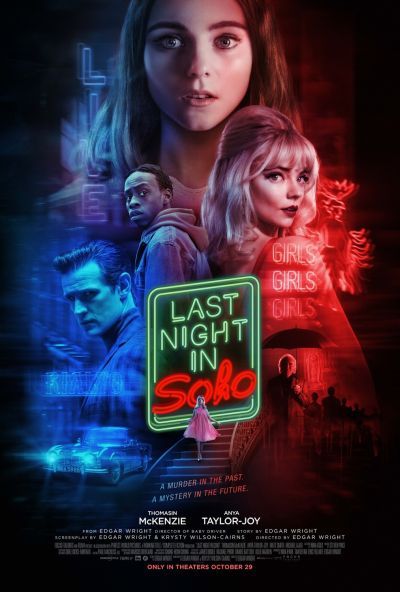 Much as I want to spoiler what happens thereafter, I will restrain myself. If only Wright and co-writer Krysty Wilson-Cairns had exhibited similar restraint. For the events that unfold down the stretch make concepts like a zombie apocalypse, rural death cult or alien invasion seem plausible in comparison. It feels very clear that the intent here was to make some kind of British giallo, all atmospheric neon glow, death by sharp implements, and more than a hint of misogyny and insanity. Unfortunately, Wright also copied Dario Argento’s inability to plot his way out of a paper-bag. For example, Eloise’s visions are largely clear, lucid depictions of Sandie’s life. Except, of course, the one which matters, when everything suddenly becomes incoherently confused. Why? So the final act of the movie can happen!
Much as I want to spoiler what happens thereafter, I will restrain myself. If only Wright and co-writer Krysty Wilson-Cairns had exhibited similar restraint. For the events that unfold down the stretch make concepts like a zombie apocalypse, rural death cult or alien invasion seem plausible in comparison. It feels very clear that the intent here was to make some kind of British giallo, all atmospheric neon glow, death by sharp implements, and more than a hint of misogyny and insanity. Unfortunately, Wright also copied Dario Argento’s inability to plot his way out of a paper-bag. For example, Eloise’s visions are largely clear, lucid depictions of Sandie’s life. Except, of course, the one which matters, when everything suddenly becomes incoherently confused. Why? So the final act of the movie can happen!
Aside from the questionable way in which mental illness is used as a plot device, there’s a bizarre inconsistency about the resolution. I’m going to have to tiptoe a bit here again, but the main thrust seems to be what a hellish, dangerous time the sixties were for women. Yet what subsequently transpires, is in almost direct contradiction to this. Similarly, Sandie is initially depicted as a strong, independent character, then suddenly turns into a helpless puppet with no apparent free-will at all, before reverting back to someone who can do whatever she wants, with no explanation. It’s lazy scripting, which makes the rules up as it goes along. See also: Eloise being mocked by a classmate for listening to old music. Later, the student Halloween party playlist, is entirely music from well before any of them were born. Consistency. It’s vastly over-rated.
Of course, the music thing is a big element of proceedings. Indeed, much of the middle third feels like it consists of Eloise peering with a sad expression out of a mirror (top), as bad things happen to Sandie, while Edgar’s “sixties jams” iTunes folder plays on random. The first time we see the trick which pairs the two women in glass, it’s quite impressive. The tenth time Wright uses it? Not so much. Let’s also address that Eloise is a thoroughly unsympathetic heroine, despite being cut from the same cloth as Wright’s other female characters. She genuinely is bat-shit crazy. I think my last shred of empathy left, when she needed to be physically stopped from stabbing a classmate in the face with scissors.
Then again, who else is there? For basically, the women here are psychos, and the men bastards – except for an irritating simp student, who feels inserted to meet a diversity quota. Meanwhile, the sixties sucked, the modern era is no better, and nobody has to take responsibility for their actions, in either decade. Sorry, what was the point here again? It’s sad to compare this to something like Shaun, where every scene, every line of dialogue and every camera movement had a point. Wright’s style is still undeniable; it’s now just art for art’s sake. For instance, during the much-praised dance sequence, where Sandi and Eloise interchange as Jack’s partner, I was consciously trying to work out how it was done technically, rather than experiencing any emotions.
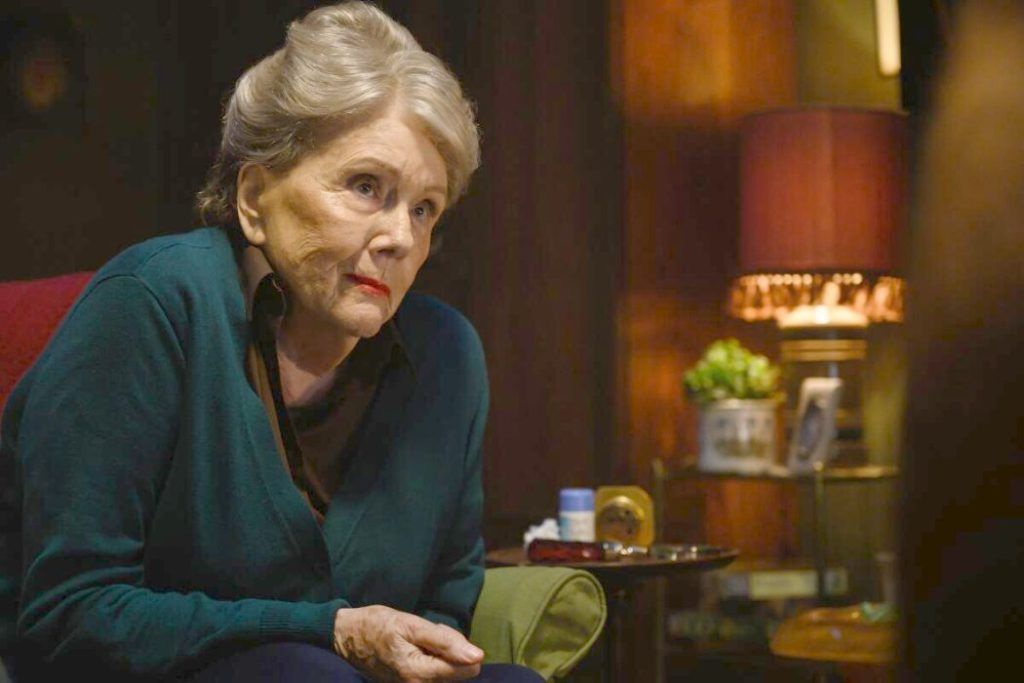 To quote the Variety review, “Wright has lovingly made Last Night in Soho for himself and, well, it’s not clear who else.” The cinema-going audience agreed. Put out on over three thousand screens in October 2021, it returned less than $4.2 million in its opening weekend, making it among the ten worst wide releases ever at the time. Worldwide, it took barely half its budget at the box-office – an even bigger bomb than Scott Pilgrim. Who would have thought it? A bizarre semi-period piece of psychological horror, rated R but not actually particularly sexy or violent, and whose best known star is largely known for a Netflix series about chess. The question is less, why didn’t crowds flock to see it, than who thought spending $43 million on this was a good idea?
To quote the Variety review, “Wright has lovingly made Last Night in Soho for himself and, well, it’s not clear who else.” The cinema-going audience agreed. Put out on over three thousand screens in October 2021, it returned less than $4.2 million in its opening weekend, making it among the ten worst wide releases ever at the time. Worldwide, it took barely half its budget at the box-office – an even bigger bomb than Scott Pilgrim. Who would have thought it? A bizarre semi-period piece of psychological horror, rated R but not actually particularly sexy or violent, and whose best known star is largely known for a Netflix series about chess. The question is less, why didn’t crowds flock to see it, than who thought spending $43 million on this was a good idea?
The best thing about this is likely Rigg, in her final role (above), and to whom the film is dedicated. I think this might have been more successful at its apparent goals if the film had focused on Ms. Collins from the beginning, rather than Eloise. Slowly ramping up her insanity, rather than unleashing it all on us in a torrent of “I’m so sure”-ness at the end, might also have helped. Instead, this is a fairly ludicrous effort, in a genre for which Wright seems to have no affinity, and all the slick editing in the world cannot make up for its lack of emotional connection.
